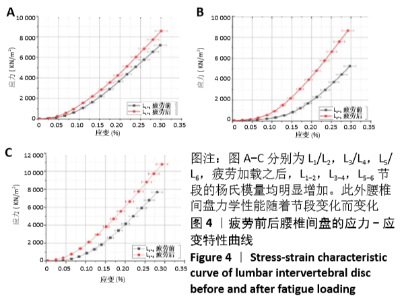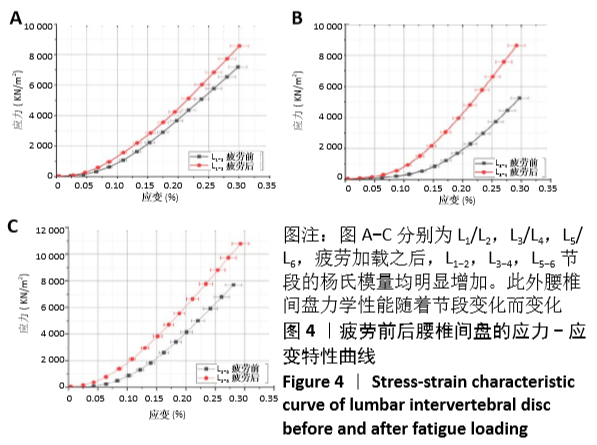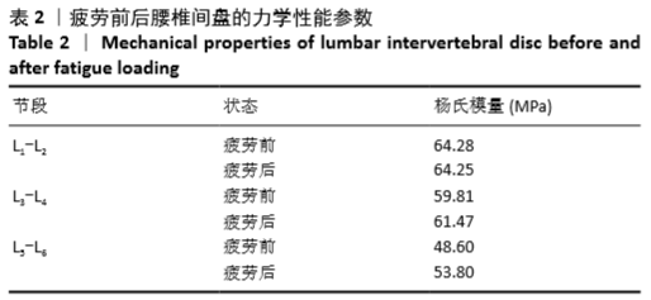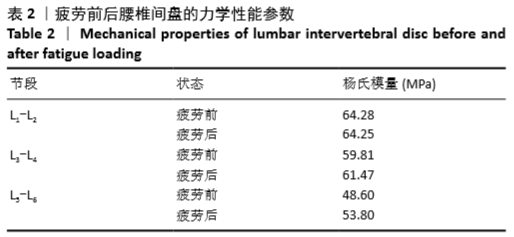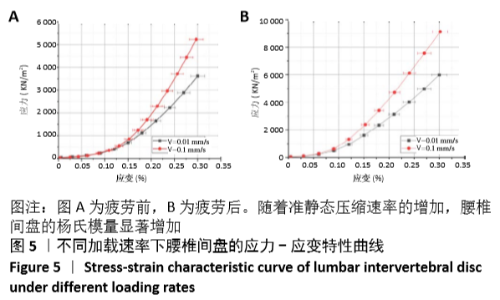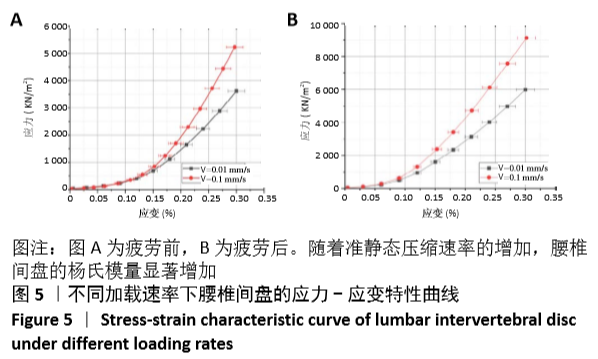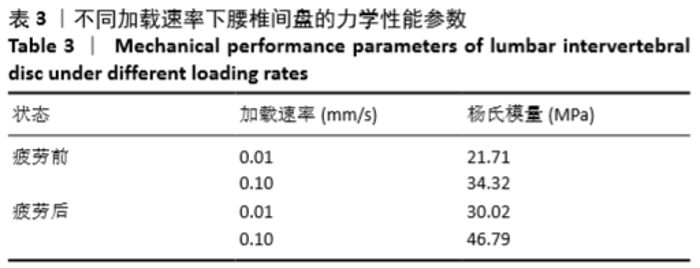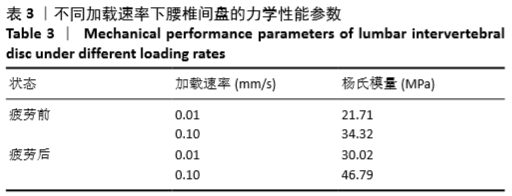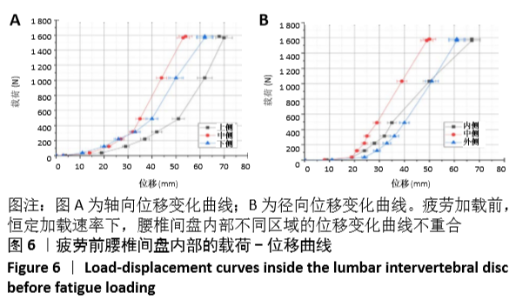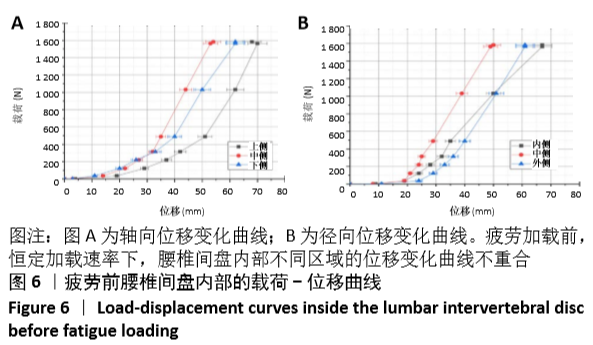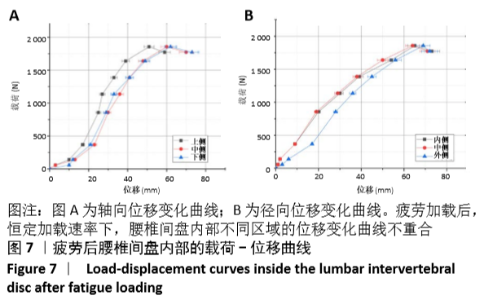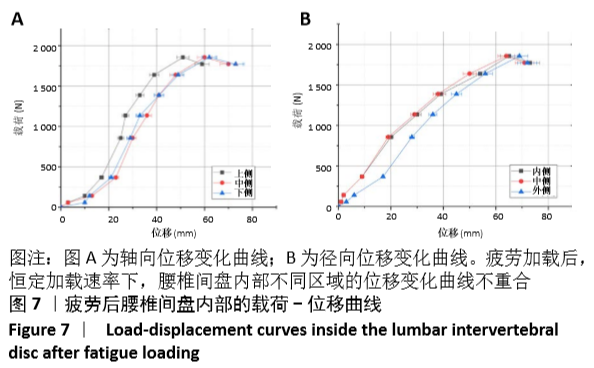[1] ZHANG CQ, ZHANG T, GAO LL, et al. Ratcheting behavior of intervertebral discs under cyclic compression: experiment and prediction. Orthop Surg. 2019;11(5):895-902.
[2] PAVLOVIĆ T, ŠTEFANČIĆ K, ROŽANKOVIĆ M, et al. Ventrolateral disc herniation causes psoas muscle compression: A case report. Radiol Case Rep. 2020;15(2):136-140.
[3] YANG X, CHENG X, LUAN Y, et al. Creep experimental study on the lumbar intervertebral disk under vibration compression load. Proc Inst Mech Eng H. 2019;233(8):858-867.
[4] SAPIEE NH, THAMBYAH A, ROBERTSON PA, et al. New evidence for structural integration across the cartilage-vertebral endplate junction and its relation to herniation. Spine J. 2019;19(3):532-544.
[5] VAN HEESWIJK VM, THAMBYAH A, ROBERTSON PA, et al. Does an annular puncture influence the herniation path: an in vitro mechanical and structural investigation. Spine. 2018;43(7):467-476.
[6] 李昊, 张西正. 骨组织疲劳损伤的生物力学研究概述[J]. 医用生物力学, 2016, 31(6):556-561.
[7] GAO LL, QIN XY, ZHANG CQ, et al. Ratcheting behavior of articular cartilage under cyclic unconfined compression. Mater Sci Eng. 2015; 57:371-377.
[8] 刘清, 刘冰, 李琨, 等. 体温环境下腰椎间盘疲劳损伤的力学性能研究[J]. 医用生物力学, 2019,34(S1):54.
[9] AZARNOOSH M, STOFFEL M, MARKERT B. A study of the damage behaviour of porcine intervertebral discs in a bioreactor environment. J Mech Behav Biomed Mater. 2018;77:727-733.
[10] 宋沙沙, 石润琇, 林磊同, 等. 腰椎间盘突出症患者步态特征的研究[J].中国康复医学杂志,2020,35(3):306-312.
[11] SCHOLLUM ML, WADE KR, ROBERTSON PA, et al. A Microstructural Investigation of Disc Disruption Induced by Low Frequency Cyclic Loading. Spine. 2018;43(3): E132-E142.
[12] BERGER-ROSCHER N, CASAROLI G, RASCHE V, et al. Influence of complex loading conditions on intervertebral disc failure. Spine. 2017; 42(2):E78-E85.
[13] LIU Q, YANG XP, LI K, et al. Internal strains of anulus fibrosus in the intervertebral disc under axial compression load. Biomed Res. 2017;28(8):3483-3486.
[14] VERGROESEN PP, AJ VDV, VAN ROYEN BJ, et al. Intradiscal pressure depends on recent loading and correlates with disc height and compressive stiffness. Eur Spine J. 2014;23(11):2359-2368.
[15] PAVLOVIĆ T, ŠTEFANČIĆ K, ROŽANKOVIĆ M, et al. Ventrolateral disc herniation causes psoas muscle compression: A case report. Radiol Case Rep. 2020;15(2):136-140.
[16] HARENI N, STRÖMQVIST F, STRÖMQVIST B, et al. Predictors of satisfaction after lumbar disc herniation surgery in elderly. BMC Musculoskelet Disord. 2019;20(1):594.
[17] CAUSA F, MANTO L, BORZACCHIELLO A, et al. Spatial and structural dependence of mechanical properties of porcine intervertebral disc. J Mater Sci Mater Med. 2002;13(12):1277-1280.
[18] YANG T, ZHANG C, LIU Q, et al. The rule of strain in different stratification of the intervertebral disc under physiologic loading. Biomed Res. 2017;28(2):1-8.
[19] BENZAKOUR A, BENZAKOUR T. Lumbar disc herniation: long-term outcomes after mini-open discectomy. Int Orthop. 2019; 43(4): 869-874.
[20] 黄菊英, 李海云, 吴浩. 腰椎间盘突出症力学特征的仿真计算方法[J]. 医用生物力学, 2012,27(1):102-107.
[21] 栾义超, 杨秀萍, 张静静, 等. 压缩条件下腰椎间盘松弛特性的有限元仿真[J]. 山东大学学报(理学版), 2018,53(3):77-81.
[22] TOOSIZADEH N, NUSSBAUM MA. Creep deformation of the human trunk in response to prolonged and repetitive flexion: measuring and modeling the effect of external moment and flexion rate. Ann Biomed Eng. 2013; 41(6):1150-1161.
[23] ZIU Q, WANG TY, YANG XP, et al. Strain distribution in the intervertebral disc under unconfined compression and tension load by the optimized digital image correlation technique. Proc Inst Mech Eng H. 2014;228(5):486-493.
[24] O’CONNELL GD, JOHANNESSEN W, VRESILOVIC EJ. Human internal disc strains in axial compression measured noninvasively using magnetic resonance imaging. Spine. 2007;32(25):2860-2868.
[25] 张伟, 宫赫, 王丽珍, 等. 腰椎间盘退行性变及损伤的生物力学研究进展[J]. 生物医学工程与临床, 2015,19(2):201-207. |
